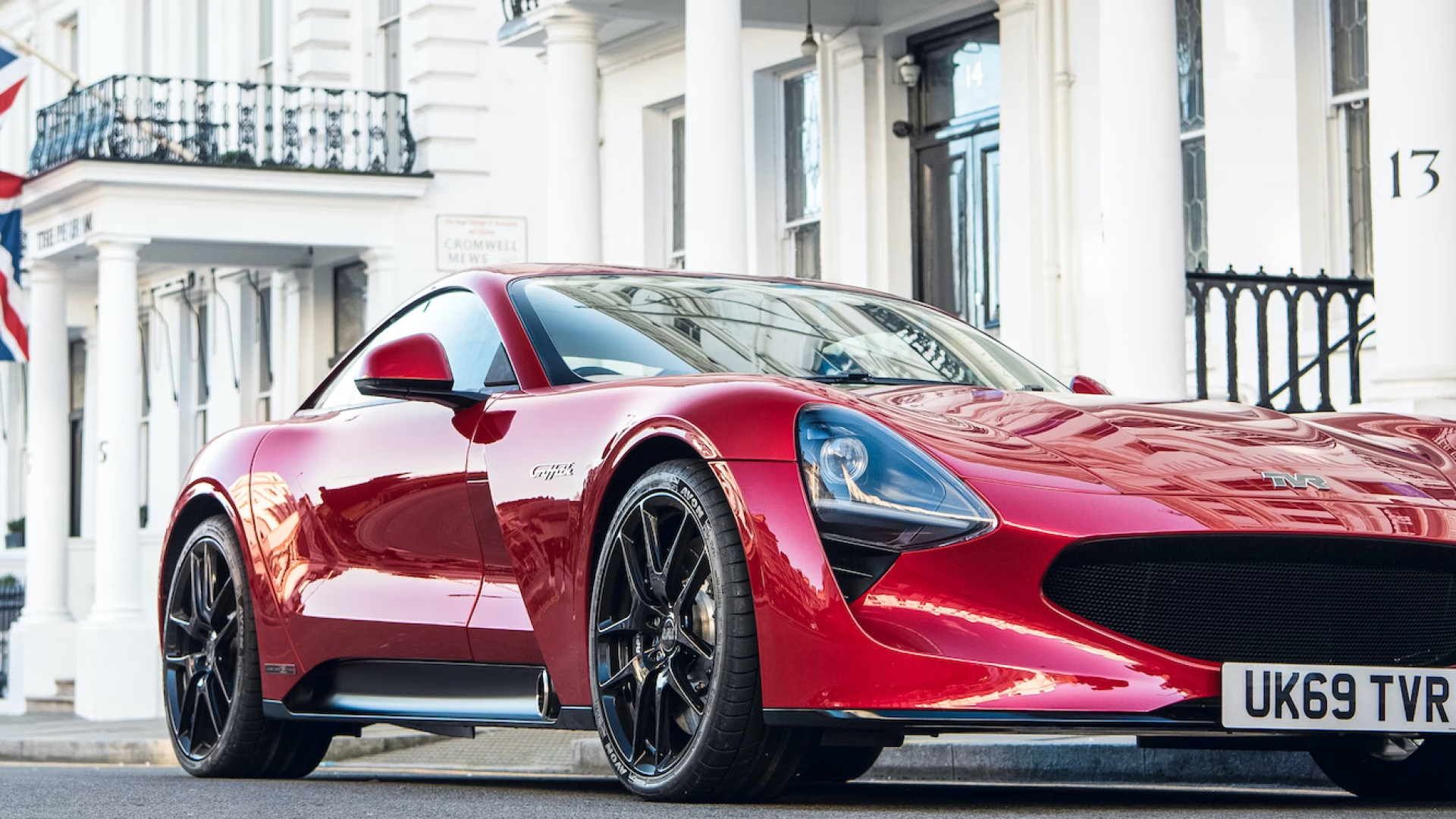TVR: The Uncompromising Soul of the British Sports Car
In the world of British sports cars, there are the elegant, the sophisticated, and then there is TVR. For over 70 years, from its humble workshop in Blackpool, England, TVR has been the creator of some of the most raw, visceral, and unapologetically loud sports cars ever conceived. A TVR is not a car for the faint of heart. It is a brand built on a philosophy of maximum power, minimum weight, and zero electronic driver aids. It is a direct, unfiltered connection between driver, machine, and a thunderous, bespoke engine. The story of TVR is a story of a rebellious, independent spirit and the relentless pursuit of the ultimate analog thrill ride.
The Genesis: A Passion for Performance
Founded in 1946 by a young engineer named Trevor Wilkinson, the name TVR was simply a contraction of his first name. From the very beginning, the formula was simple: a lightweight tubular steel chassis, a sleek fiberglass body, and the most powerful engine that could be squeezed into it. Early models like the Grantura were tiny, giant-killing race cars for the road that established the brand's reputation for incredible performance and handling. This foundational DNA would define the brand for its entire existence.
Core Philosophy: No Compromise. Ever.
Under the charismatic and ambitious leadership of Peter Wheeler in the 1980s and 90s, TVR entered its golden age and solidified its core philosophy:
- Power and Sound: TVR became famous for its use of thunderous Rover V8 engines and, in a move of incredible ambition, began designing its own bespoke, high-revving straight-six (the Speed Six) and V8 (the AJP8) engines. A TVR is as much a musical instrument as it is a car, with a loud, crackling, and utterly intoxicating exhaust note.
- Lightweight Simplicity: TVRs have always featured lightweight fiberglass bodies bonded to a stiff chassis. This results in an incredible power-to-weight ratio that is the secret to their explosive performance.
- No Electronic Nannies: In an era of increasing electronic intervention, TVR was defiant. TVRs famously have no traction control, no anti-lock brakes (for most of their history), and no airbags. The car gives the driver total control and demands their total attention. Driving a TVR is a pure, exhilarating, and deeply engaging experience.
The Icons of Blackpool: A Legacy of Beautiful Beasts
TVR's modern history is a gallery of stunning, savage, and unforgettable sports cars that have become true cult classics.
The Griffith and Chimaera: The V8 Revolution
The TVR Griffith (1991-2002) was the car that started the brand's 90s renaissance. It was a stunningly beautiful, curvaceous roadster with the heart of a bruteâa thunderous Rover V8. It was an instant sensation, a British muscle car with the looks of a classic roadster. Its slightly more comfortable and practical sibling, the Chimaera, became the best-selling TVR of all time, the perfect blend of grand touring comfort and raw V8 power.
The Cerbera: The In-House Monster
The TVR Cerbera (1996-2003) was a statement of incredible ambition. It was a stunning 2+2 coupe and the first TVR to be powered by the company's own, in-house designed engines: the brutal AJP8 V8 and the screaming Speed Six. The Cerbera was a savage, beautiful, and utterly terrifying machine that cemented TVR's reputation as a builder of true world-class performance engines.
The Tuscan and the Sagaris: The Final Roar
The final cars of the Wheeler era were the most dramatic of all. The TVR Tuscan (1999-2006), made famous by the movie Swordfish, was a wild, organic design with its powerful Speed Six engine and often finished in iridescent "chameleon" paint. The final masterpiece was the TVR Sagaris (2005-2006). This was a Le Mans-inspired endurance racer for the road, a raw, aggressive beast with its iconic slash-cut vents and clear spoiler. It was the ultimate, untamed expression of TVR's wild spirit.
The Rebirth and The Future
After a period of dormancy under Russian ownership, the TVR brand was brought back under British control. The company has developed a new Griffith, a stunning modern interpretation of the 90s legend, powered by a Cosworth-tuned Ford V8 and engineered with input from legendary designer Gordon Murray. While its production has faced delays, it represents a new hope for the return of this iconic British brand.
Target Audience: The Purist
The TVR owner is a true driving purist. They are an enthusiast who craves an analog, unfiltered driving experience. They are not afraid of a car that demands respect and skill. They value the sound of a roaring engine, the feel of the road through the steering wheel, and the drama of a truly unique and handcrafted machine. For this driver, there is simply no substitute for the raw, uncompromising thrill of a TVR.
